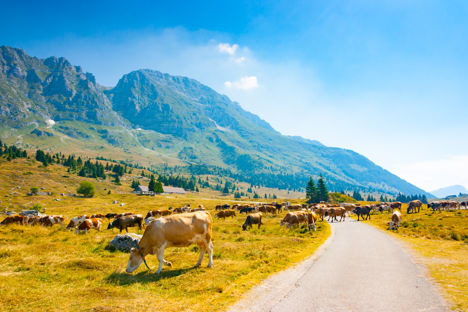
Friuli Venezia Giulia
Italy's most northeastern region has a distinct culture and identity, heavily influenced by bordering countries Austria and Slovenia. With a coastline, mountains, lagoons and valleys, there's a wide array of local ingredients to discover, and the resulting dishes are like nothing else you'll find in the rest of the country.
Friuli Venezia Giulia
Italy's most northeastern region has a distinct culture and identity, heavily influenced by bordering countries Austria and Slovenia. With a coastline, mountains, lagoons and valleys, there's a wide array of local ingredients to discover, and the resulting dishes are like nothing else you'll find in the rest of the country.
Friuli Venezia Giulia (often simply referred to as Friuli) is an Italian region like no other. Having only become part of Italy in the 1950s (and one of the five autonomous regions of the country), it has much more in common with its neighbours Austria and Slovenia – something that clearly comes across in its food. Pork, sauerkraut, beans and other ingredients often associated with eastern Europe are far more prevalent than the tomatoes, risottos, herbs and pastas we tend to think of when talking about Italian food, making Friulian cuisine a truly unique aspect of Italy’s gastronomy.
Being based in the far north-eastern reaches of Italy, Friuli is home to some stunning parts of the Carnic and Julian Alps. Further inland the region becomes hilly and covered in pine forests, with lagoons and lakes peppered throughout. It also lays claim to a small part of the Adriatic Sea, which means fish and seafood are readily available (particularly in Trieste, a historically important port city). Friuli’s proximity to Croatia, Slovenia and Austria gives the region a distinctly European feel rather than Italian, although it shares many characteristics with Veneto, its neighbour to the west.
As a general rule, the food of Friuli is hearty, robust and filling, in order to stave off cold winds and temperatures. There is an incredibly strong Germanic influence on all aspects of local fare, which when mixed with Italian cooking techniques results in a style of cuisine that’s totally unique. Read on for a guide to the ingredients and flavours found in Friuli, then recreate the area’s most iconic dishes and get to know more about the chefs championing the local food.


